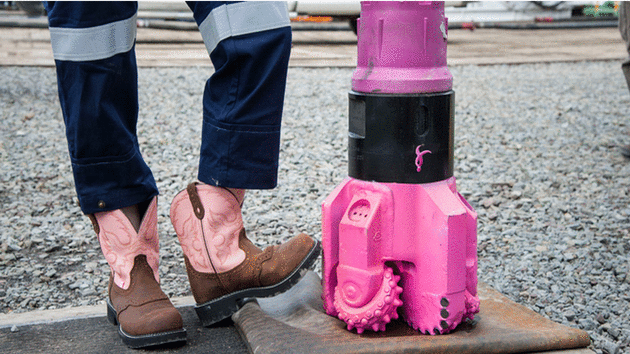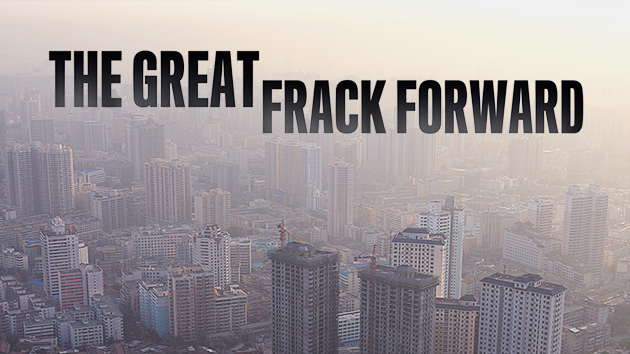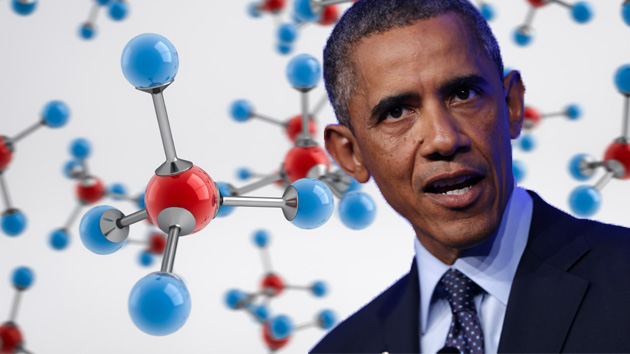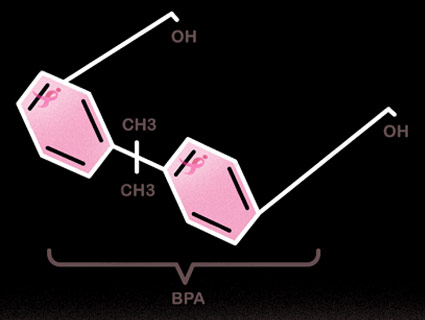
Baker Hughes
Here’s some news that frankly, I initially thought was a spoof: for the second year in a row, breast cancer charity Susan G. Komen for the Cure—which caused massive outrage when it defunded Planned Parenthood in 2012—has partnered with Baker Hughes, a leader in the fracking industry. The Houston-based oilfield services company will donate $100,000 to Komen over the year and sell 1,000 pink-painted drill bits used for fracking.
According to Baker Hughes’ “Doing Our Bit for the Cure” campaign website, “The pink bits serve as a reminder of the importance of supporting research, treatment, screening, and education to help find the cures for this disease, which claims a life every 60 seconds.”
The irony here is that one of the primary criticisms of fracking is that the fracking process injects possible and known carcinogens, including benzene, formaldehyde, and sulfuric acid, into the ground and surrounding environment. A 2011 senate investigation of 14 leading fracking companies found that, between 2005 and 2009—far from the height of the fracking era—the companies had “injected 10.2 million gallons of fracturing products containing at least one carcinogen.”
Only adding to the irony is the fact that Komen’s very own website, “Environmental Chemicals and Breast Cancer Risk,” informs readers of “Common chemicals that may be associated with breast cancer,” and some of the chemical categories listed are exactly those released when fracking.
Here are a few of those chemicals, along with the Komen website’s very own explanations of the cancer risks of their chemical categories:
- Naphthalene, a type of polycyclic aromatic hydrocarbon: “Polycyclic aromatic hydrocarbons (PAHs) – found in vehicle exhaust, air pollution, tobacco smoke, and grilled and smoked food…are produced by combustion and can be found in household sources such as car and other vehicle exhaust; cigarette smoke; and barbequed, smoked or charred foods. They are also found in industrial sources from petroleum production, waste incineration and coal or oil-fired power plants. Inhalation is the major means of PAH exposure because it can become suspended in the air. Like other chemicals associated with breast cancer risk, PAHs are stored in fat tissue and are considered EDCs because they can interact with the estrogen receptor. They can also act directly on DNA to cause mutations.”
- Lead and Di (2-ethylhexyl) phthalate, a type of phthalate: “It has been well accepted that our body’s own hormones, especially estrogen, play an important role in breast cancer risk. However, research has found that numerous environmental chemicals can act like estrogen. These chemicals are often referred to as endocrine disrupting compounds (EDCs) and some researchers believe they may contribute to breast cancer risk by mimicking or disrupting the effects of the body’s natural estrogen. Some commonly recognized EDCs are DDT, BPA, PAHs, dioxin, PCBs, phtlalates and heavy metals (e.g., arsenic, cadmium, lead, mercury).”
According to Fuel Fix, “Each steel bit—weighing 85 to 260 pounds—is painted by hand at the company’s drill bit manufacturing facility in The Woodlands and then shipped to the drill site in a pink-topped container containing information packets with breast health facts, including breast cancer risk factors and screening tips.”
Advocacy group Breast Cancer Action called the Komen/Baker Hughes partnership “the most ludicrous piece of pink sh*t” they’ve seen all year.
















